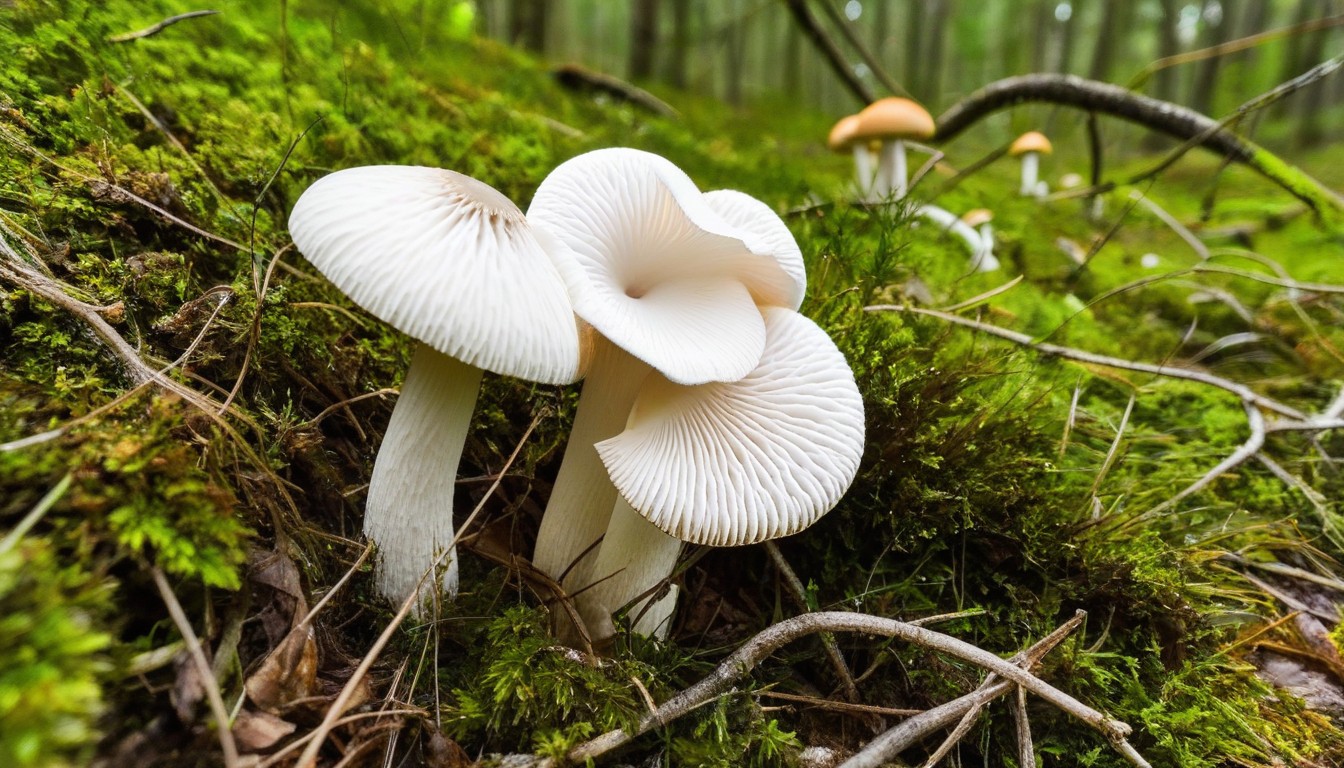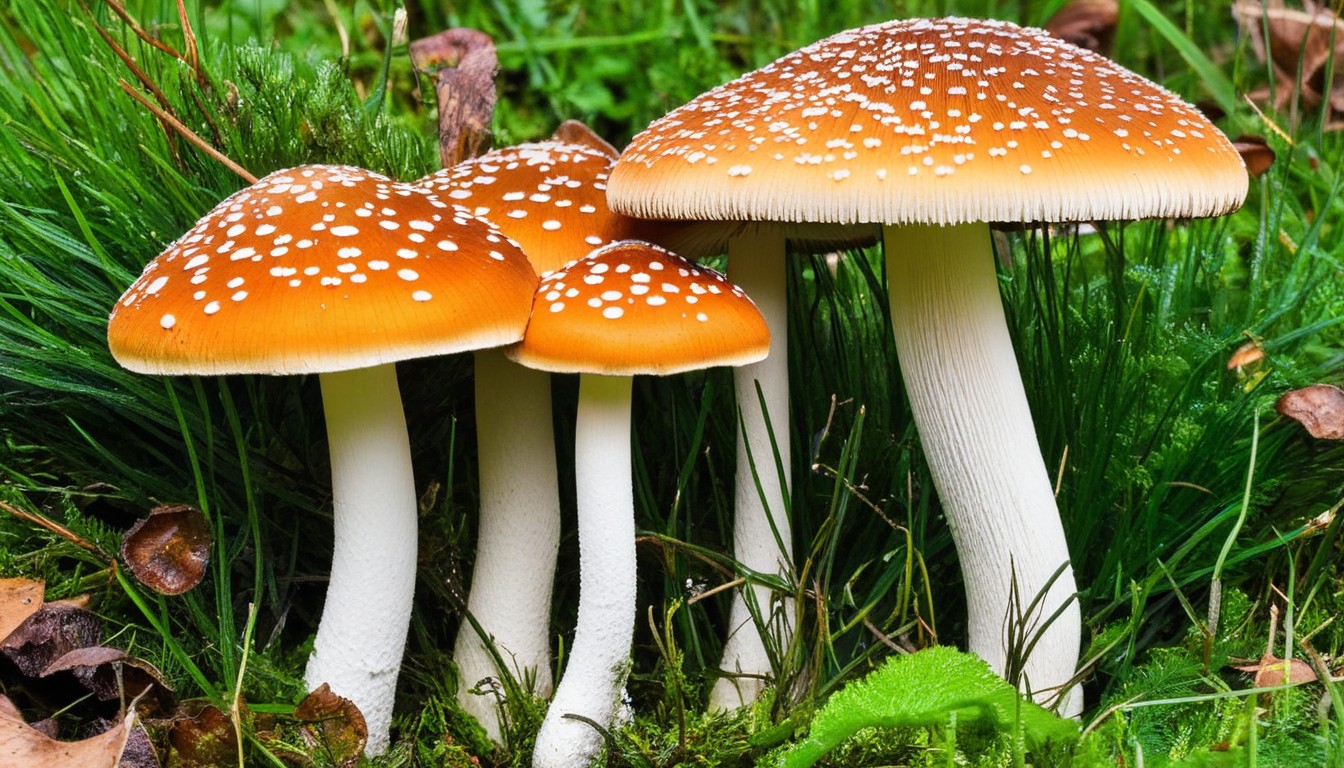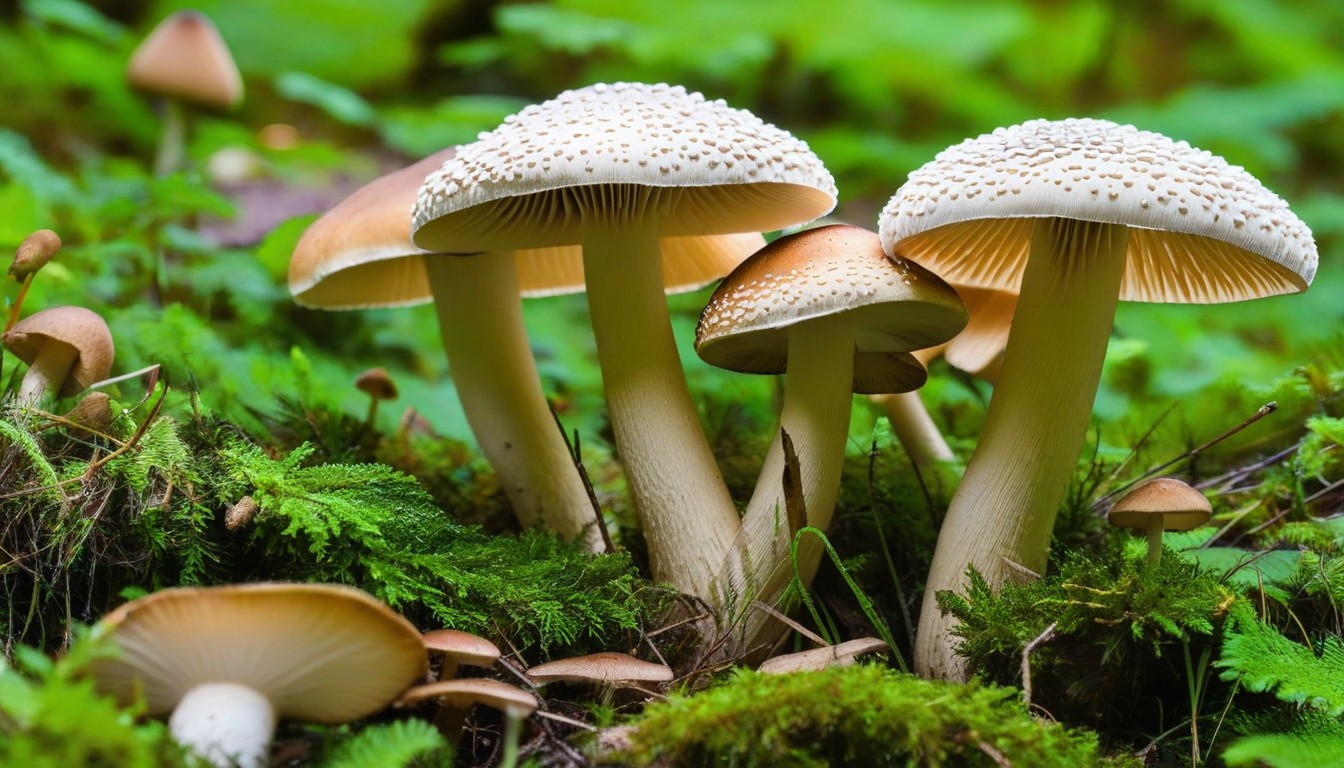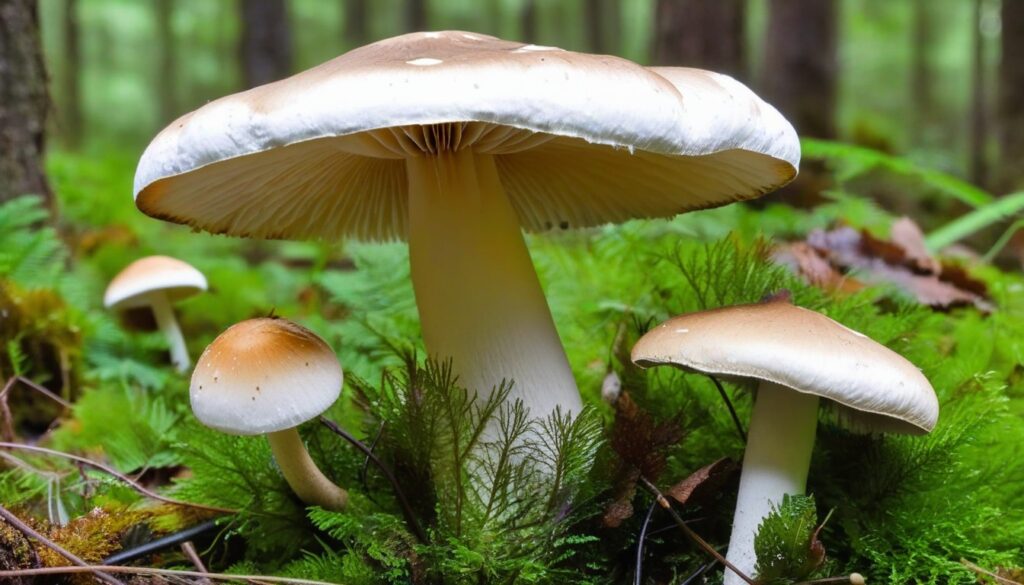Mushrooms are a common sight in gardens and lawns, but they can pose a threat to the health of your plants and loved ones. Killing mushrooms with bleach is a safe and effective solution when done correctly. In this guide, we will explore the steps you need to take to safely eliminate mushroom growth in your green spaces.
Key Takeaways
- Killing mushrooms with bleach can help protect your plants and loved ones from potential health risks
- Proper preparation before applying bleach is crucial for successful mushroom elimination
- Choosing the right bleach solution and applying it correctly can help minimize harm to surrounding plants
- Following safety precautions when using bleach is important for your health and the environment
- Post-treatment care and preventative measures can help prevent future mushroom infestations
Understanding Mushroom Infestations
Before we can truly understand how to eliminate mushroom infestations, we must first understand what causes their growth. Mushroom infestations occur when there is excess moisture in the soil or on plant material. This creates the perfect environment for mushrooms to grow and thrive.
One common cause of mushroom growth is overwatering plants or watering them at the wrong time of day. Additionally, poor soil drainage can contribute to excess moisture and fungal growth. It’s also important to note that certain types of plants, such as those with decaying roots or fruits, can attract fungi and lead to mushroom infestations.
Signs of mushroom growth include the appearance of small white or brown mushrooms in or around the affected area, a musty odor, and mushy soil or plant material.
Preventing Mushroom Infestations
The best way to prevent mushroom infestations is to ensure proper soil drainage, avoid overwatering plants, and remove any decaying plant material regularly. It’s also important to keep an eye on the pH levels of your soil and adjust them if necessary to prevent fungal growth.
Dealing with an Existing Infestation
If you already have a mushroom infestation, there are several steps you can take to control their growth. One effective method is to remove the affected plants and soil, disposing of them in a sealed bag to prevent spreading spores. Additionally, improving soil drainage and reducing moisture levels can help prevent future infestations.
Remember that not all mushrooms are harmless, and some can be toxic if ingested. Always wear gloves when handling mushrooms and dispose of them carefully.
By understanding the causes and signs of mushroom infestations, you can take proactive steps to prevent their growth and effectively eliminate existing infestations.
Identifying Harmful Mushroom Species

While mushrooms can add beauty to your garden or yard, some species can be harmful and even deadly if ingested. Whether you have pets or children playing in the area, it’s essential to identify these potentially hazardous mushrooms to avoid any accidents.
Toxic mushrooms come in various shapes, sizes, and colors, making them challenging to identify. However, there are some tell-tale signs that can help you differentiate them from harmless ones. Here are some characteristics to look for when identifying harmful mushroom species:
|
Characteristics |
Description |
|---|---|
|
Unusual colors |
Mushrooms with bright colors like red, orange, and yellow should be avoided as they are more likely to be toxic. |
|
Distinctive Odor |
If you detect a strong, unpleasant odor coming from the mushroom, it’s best to steer clear. |
|
Gilled Mushrooms |
The gills under the cap of a mushroom can indicate toxicity. If the gills are black, brown, or purple, the mushroom could be dangerous. |
|
Spore Print |
Collecting a mushroom’s spores can help identify its species. A white spore print under the cap indicates the mushroom is edible, while a brown or black spore print is poisonous. |
It’s crucial to avoid consuming mushrooms that you don’t know are safe, as some species can cause fatal reactions. If you suspect that you or someone you know has eaten a poisonous mushroom, seek medical attention immediately.
The Risks of Mushroom Infestations
Mushroom infestations can bring various risks to your green spaces and garden. It’s essential to understand and address these potential hazards to keep your plants, pets, and family safe. Below are some of the significant risks associated with mushroom growth.
|
Risk |
Description |
|---|---|
|
Plant damage |
Mushrooms consume nutrients from the soil and compete with plants for resources. Over time, this can weaken or damage plant roots and cause stunted growth. |
|
Allergic reactions |
Some people may develop an allergic reaction to mushrooms when exposed to their spores or by ingesting them. Symptoms can range from mild to severe and include sneezing, coughing, and even anaphylaxis. |
|
Poisoning |
Not all mushrooms are safe to eat. Some species can be toxic and cause serious illness or even death if ingested. Children and pets are especially vulnerable to accidental ingestion. |
|
Attractive to pests |
Mushrooms can attract pests such as slugs and snails, providing them with a food source and shelter. These pests can then spread to other plants, causing damage and disrupting the ecosystem of your garden. |
As you can see, the risks associated with mushroom infestations are significant. Taking action to eliminate mushrooms from your garden is essential to keep your plants healthy and protect your family and pets.
Preparing for Mushroom Elimination
Proper preparation is key to successfully eliminating mushrooms from your green spaces. Before applying bleach, it’s important to follow these steps:
- Identify the affected area: Take note of where the mushrooms are growing and mark the location. This will help you target the bleach solution accurately.
- Remove any debris: Clear the area of any leaves, twigs, or other debris that may obstruct the bleach from reaching the mushrooms.
- Water the soil: Water the soil around the affected area thoroughly. This will help the bleach solution penetrate the ground more effectively.
- Protect surrounding plants: Cover nearby plants with plastic or a cloth to prevent the bleach from damaging them. Ensure that the covering is secure and won’t be blown away by wind or rain.
- Wear protective clothing: When handling bleach, it’s important to wear protective clothing, including gloves, long-sleeved shirts, pants, and closed-toe shoes.
By following these preparation steps, you can ensure that your bleach application will effectively eliminate mushrooms while minimizing harm to surrounding plants and the environment.
Choosing the Right Bleach Solution

When it comes to eliminating mushrooms with bleach, selecting the right bleach solution is crucial for success. Not all bleach products are created equal, and using the wrong one can be ineffective and potentially harmful.
The first step is to choose a bleach product that contains sodium hypochlorite as the active ingredient. Sodium hypochlorite is the compound responsible for killing the mushroom spores and preventing regrowth.
Next, it’s important to determine the concentration of the bleach. Most household bleach products have a concentration of 6% or less, which is suitable for most smaller mushroom infestations. However, for larger or more persistent infestations, a bleach solution with a higher concentration may be necessary.
To prepare the solution, mix the bleach with water in a ratio of 1:10. For example, one cup of bleach should be mixed with ten cups of water. The resulting solution should be used immediately and not stored for future use.
Choosing the Right Bleach for the Job
When selecting a bleach product, be sure to read the label carefully to ensure it is suitable for the job at hand. Some bleach products may contain additional chemicals or additives that can be harmful to plants or the surrounding environment.
It’s also important to consider the surface or area where the bleach will be applied. For example, a bleach product designed for use on clothing may not be suitable for use on outdoor surfaces or plants.
Pro Tip: If you’re unsure which bleach product to use, consult with a gardening or landscaping professional for advice.
Preparation Tips
Before preparing the bleach solution, be sure to protect yourself by wearing gloves, safety glasses, and a mask to prevent inhalation of fumes.
When mixing the bleach and water, always add the bleach to the water, not the other way around. This will prevent the bleach from splashing and potentially causing harm.
Once the solution is prepared, use it immediately. Avoid storing any excess solution, as it can lose its effectiveness over time.
Summary
Choosing the right bleach solution is critical for effectively eliminating mushrooms. Look for a product that contains sodium hypochlorite as the active ingredient, and ensure the concentration is appropriate for the size of the infestation. Always read the label carefully and take necessary precautions to protect yourself and the surrounding environment.
Applying Bleach to Kill Mushrooms
If you’ve properly prepared the affected area, it’s time to apply bleach to kill the mushrooms. This step requires careful attention to ensure the bleach targets the mushrooms while avoiding damage to surrounding plants. Follow these simple steps to apply bleach safely:
- Wear protective gear: Before handling bleach, put on protective clothing, gloves, and goggles to prevent skin and eye irritation.
- Mix the bleach solution: Use a ratio of one part bleach to ten parts water to create a diluted solution. Pour the mixture into a spray bottle for easy application.
- Target the mushrooms: Carefully spray the bleach solution directly onto the mushrooms, making sure to cover them completely.
- Avoid the soil: Try to avoid spraying the solution onto the surrounding soil, as bleach can damage the soil’s microbiome and hinder plant growth.
- Wait and repeat: Allow the bleach solution to sit on the mushrooms for at least 24 hours. If there are still mushrooms present after this period, repeat the process until they are completely eliminated.
Remember to thoroughly wash your hands and clothing after applying bleach, and dispose of any remaining solution according to your local regulations. Bleach can be harmful to humans and animals, so it’s essential to follow safety precautions throughout the process.
When applying bleach to kill mushrooms, it’s crucial to target the mushrooms specifically while minimizing harm to surrounding plants.
In the next section, we’ll discuss important safety precautions to follow when using bleach to eliminate mushrooms.
Safety Precautions When Using Bleach

While bleach is an effective tool for killing mushrooms, it can pose potential hazards if not used properly. Here are some important safety precautions to follow when using bleach:
- Wear protective clothing: Always wear protective clothing such as gloves, goggles, and a mask when handling bleach to avoid skin, eye, and respiratory irritation.
- Ventilate the area: Ensure that the area where you’re applying bleach is well-ventilated to prevent inhalation of fumes. Open windows or use fans to circulate air.
- Keep bleach out of reach: Store bleach out of reach of children and pets to avoid accidental ingestion.
- Mix bleach properly: Always follow the instructions on the bleach bottle when mixing with water. Do not mix bleach with other cleaning products as this can create harmful fumes.
- Test bleach on a small area: Before applying bleach to a large area, test it on a small, inconspicuous area to ensure it won’t cause damage or discoloration.
- Rinse thoroughly: After applying bleach, rinse the area thoroughly with water to remove any residue.
- Dispose of bleach properly: Do not dispose of bleach down the drain or in the trash. Follow local regulations for proper disposal.
By following these safety precautions, you can effectively use bleach to eliminate mushrooms while minimizing any potential risks. Remember to always read the label and handle bleach with care.
Aftercare and Preventative Measures
After eliminating mushrooms with bleach, it’s important to take adequate measures to prevent future infestations. Here are some post-treatment tips:
- Remove dead mushrooms: Dead mushrooms can still release spores, which can lead to new infestations. Use gloves to safely remove them and dispose of them in a sealed bag.
- Improve drainage: Mushrooms thrive in moist environments, so improving drainage can help prevent future growth. Consider adding drainage systems or diverting water away from affected areas.
- Cultivate healthy soil: Healthy soil can prevent mushrooms from taking hold. Consider adding compost or other organic matter to improve soil health.
- Reduce shade: Mushrooms thrive in shaded areas. Consider pruning trees or plants to allow more sunlight to reach the affected area.
By taking these preventative measures, you can reduce the likelihood of future mushroom infestations in your green spaces.
Alternative Methods for Mushroom Control

If you’re not comfortable using bleach to eliminate mushrooms, or if it doesn’t work for your situation, there are alternative methods to consider.
1. Manual Removal
One way to control mushrooms is by manually removing them from the affected area. This process involves using a garden hoe, rake, or other tool to scoop up and remove the mushrooms, including the roots.
However, manual removal can be time-consuming, and there is a risk of spreading the spores and promoting further mushroom growth.
2. Changing Soil Conditions
Mushrooms thrive in moist, organic soil. By changing the soil conditions in the affected area, you can discourage mushroom growth.
Some ways to alter the soil include reducing watering, increasing sunlight, adding sand or gravel to improve drainage, or increasing the pH level to make the soil less acidic.
3. Fungicides
Fungicides are chemical compounds designed to kill fungus, including mushrooms. These products can be effective in controlling mushroom growth, but they can also harm beneficial organisms in the soil and the environment.
It’s essential to read and follow the manufacturer’s instructions when using fungicides and to exercise caution to minimize the risk of environmental contamination.
4. Organic Remedies
There are several organic remedies to control mushroom growth, including vinegar, baking soda, hydrogen peroxide, or cornmeal. These substances are believed to alter the pH level of the soil or break down the organic matter that mushrooms need to grow.
While organic remedies may be safer for the environment and humans than chemical products, they may not be as effective or reliable in eliminating mushrooms.
5. Consult a Professional
If alternative methods don’t work or you don’t feel comfortable handling the situation on your own, consider consulting a professional. A certified arborist or landscaper can assess your green spaces, identify the root cause of the mushroom infestation, and suggest suitable solutions.
Professional assistance may be more costly than DIY methods, but it can ensure a safer and more effective mushroom control in the long run.
The Benefits of Professional Assistance
While using bleach to kill mushrooms is a simple process, sometimes professional assistance is necessary. Experts can provide a more thorough and long-term solution to persistent mushroom infestations.
Professional mushroom control services offer several benefits, including:
|
Benefit |
Description |
|---|---|
|
Expertise |
Professional mushroom control technicians have extensive knowledge and experience in identifying mushroom species and implementing effective control methods. |
|
Advanced Techniques |
Specialized equipment and techniques are often necessary for effective mushroom control, and professionals have access to them. |
|
Less Risk |
When handling toxic mushrooms, avoiding the potential health hazards is crucial. Professional technicians are trained to handle hazardous materials safely. |
|
Time and Cost Savings |
Professional mushroom control services can save time and money in the long run by providing efficient, long-term solutions to mushroom infestations. |
When considering professional assistance, it’s important to choose a reputable company with a proven track record in mushroom control. Do your research, read reviews, and ask for recommendations from trusted sources.
Remember, the safety and health of yourself and others is of utmost importance. When in doubt, always consult a professional for mushroom control.
Conclusion
Eliminating mushroom growth in your green spaces can be a challenging task, but with the right methods and precautions, it can be safely achieved. By following the steps outlined in this comprehensive guide, you can be confident in your ability to rid your garden of pesky mushrooms.
Remember to Always Follow Safety Precautions
When dealing with bleach and other chemicals, it’s crucial to prioritize safety. Make sure to wear appropriate clothing and gloves, keep pets and children away from the affected area, and follow all instructions carefully.
Consider Alternative Methods for Mushroom Control
If you prefer to avoid using bleach, or if it isn’t yielding the desired results, there are other methods for managing mushroom growth. You can try removing the mushrooms manually, increasing ventilation in the area, or using natural fungicides.
Know When to Seek Professional Assistance
In some cases, it may be necessary to seek professional help for mushroom control. For example, if you’re dealing with a large infestation or if the mushrooms are harmful and require expert identification. Professional assistance can also provide long-term preventative solutions.
Remember, by taking the right precautions and following the proper techniques, you can effectively eliminate mushrooms and protect your green spaces for years to come.
FAQ
Can bleach kill mushrooms?
Yes, bleach can effectively kill mushrooms when applied properly.
How does bleach kill mushrooms?
Bleach contains chemicals that break down the cellular structure of mushrooms, leading to their death.
Is it safe to use bleach to kill mushrooms?
When used as directed, bleach is generally safe for eliminating mushrooms. However, it’s important to follow safety precautions and avoid contact with skin or eyes.
Will bleach harm my plants?
Bleach can harm plants if applied directly. It’s crucial to target the mushrooms while minimizing contact with surrounding vegetation.
How long does it take for bleach to kill mushrooms?
The time it takes for bleach to kill mushrooms can vary depending on factors such as the concentration of the solution and the size of the mushrooms. Generally, it may take several hours to a few days.
Can I use any type of bleach?
It’s recommended to use chlorine bleach or hydrogen peroxide for killing mushrooms. Avoid using bleaches with added scents or additives.
Do I need to dilute the bleach?
Yes, it’s important to dilute the bleach with water according to the instructions on the product label. Using undiluted bleach can be too harsh and may damage plants.
What safety precautions should I take when using bleach?
When using bleach, always wear protective gloves and goggles to avoid skin and eye irritation. Ensure proper ventilation in the area, and keep bleach away from children and pets.
Are there any natural alternatives to bleach for killing mushrooms?
Yes, there are natural alternatives such as vinegar, baking soda, or hydrogen peroxide that can be used to kill mushrooms. However, their effectiveness may vary.
How can I prevent future mushroom infestations?
To prevent mushroom infestations, ensure that your green spaces have proper drainage, adequate sunlight, and good air circulation. Regularly remove decaying organic matter and maintain healthy soil conditions.

